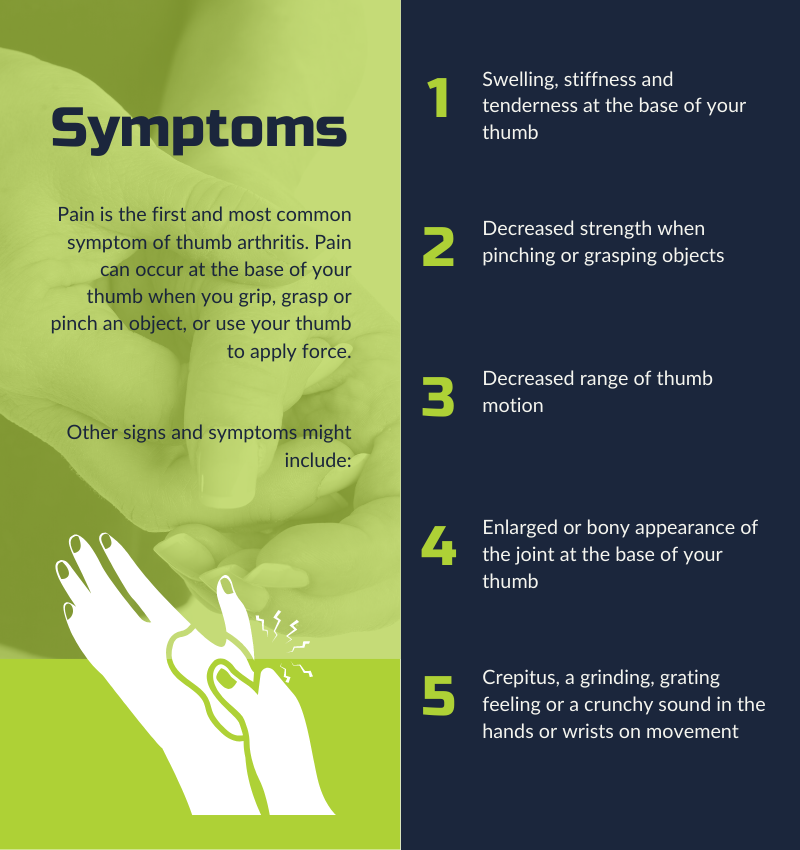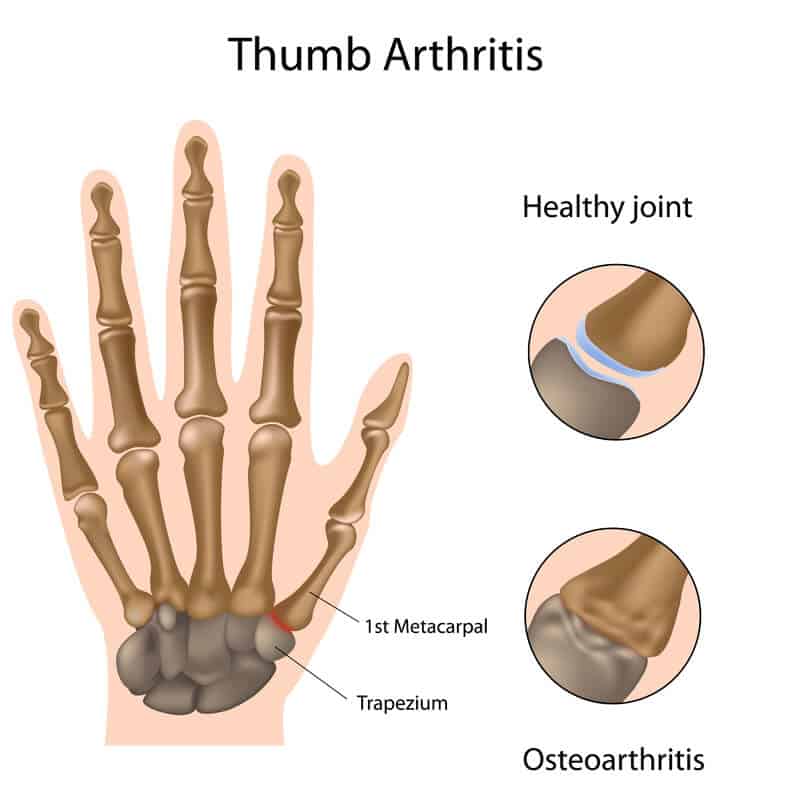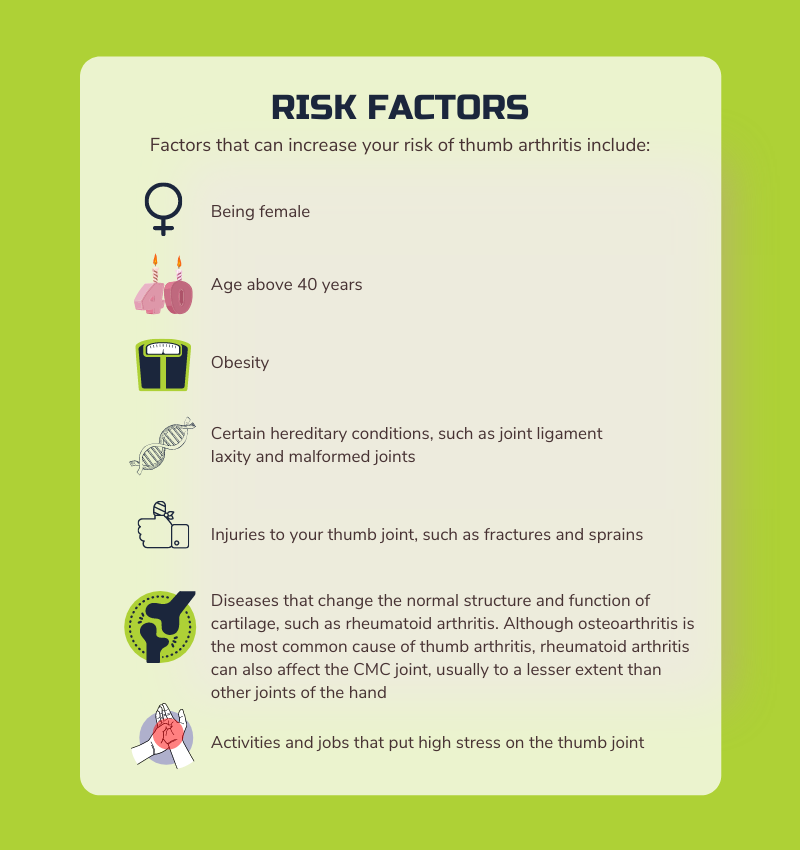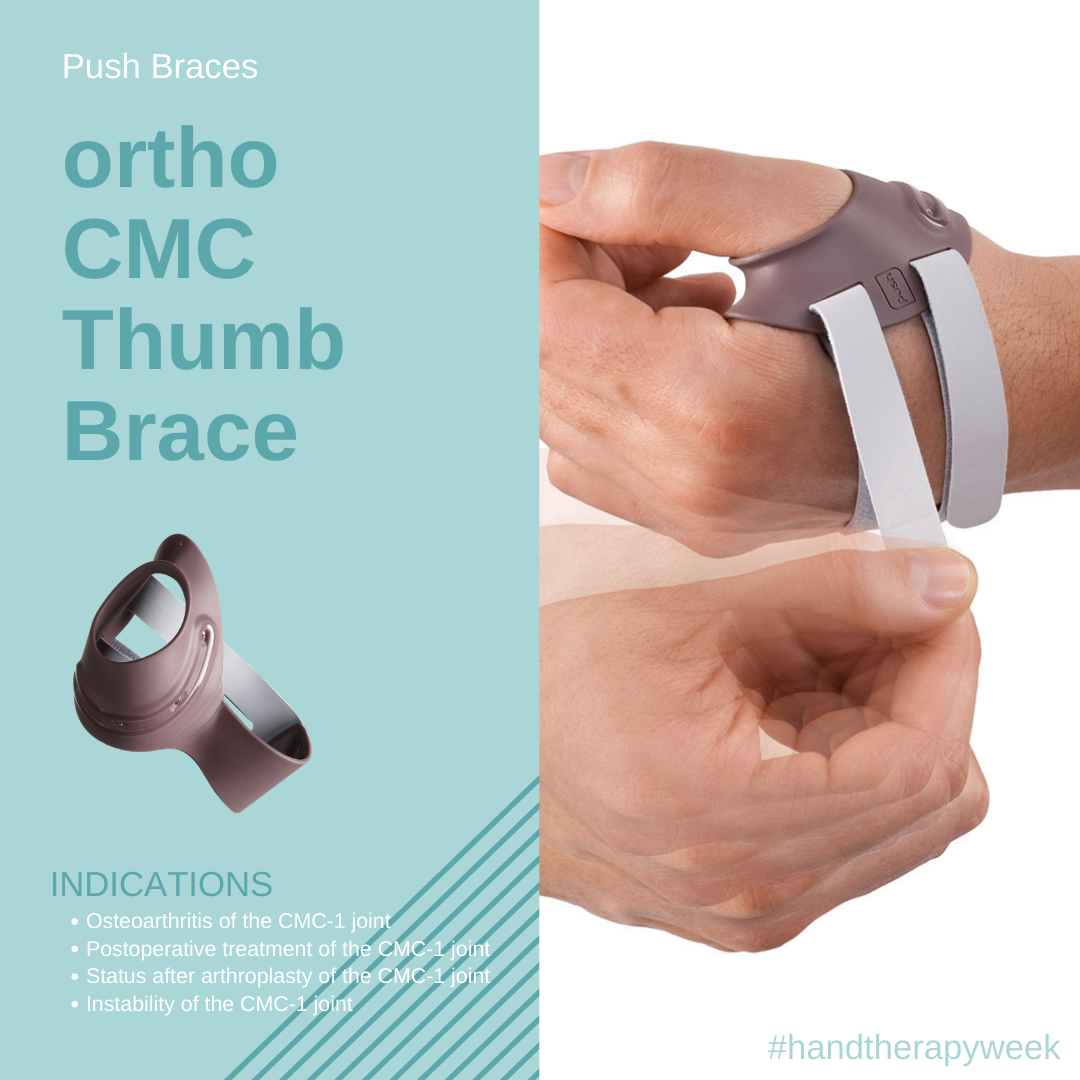What is Thumb Arthritis?
Thumb arthritis is common with aging and occurs when cartilage wears away from the ends of the bones that form the joint at the base of your thumb — also known as the carpometacarpal (CMC) joint.
Thumb arthritis can cause severe pain, swelling, and decreased strength and range of motion, making it difficult to do simple tasks, such as turning doorknobs and opening jars. Treatment generally involves a combination of medication and splints. Severe thumb arthritis might require surgery.


Causes
Thumb arthritis commonly occurs with aging. Previous trauma or injury to the thumb joint also can cause thumb arthritis.
In a normal thumb joint, cartilage covers the ends of the bones — acting as a cushion and allowing the bones to glide smoothly against each other. With thumb arthritis, the cartilage that covers the ends of the bones deteriorates, and its smooth surface roughens. The bones then rub against each other, resulting in friction and joint damage.
The damage to the joint might result in growth of new bone along the sides of the existing bone (bone spurs), which can produce noticeable lumps on your thumb joint.

(Image Attribution:"https://drbesh.com/wp-content/uploads/2020/10/FORM-Hand-Wrist-Elbow-Thumb-Arthitis-Infographics.jpg"")

Treatment of Thumb Arthritis
In the early stages of thumb arthritis, treatment usually involves a combination of non-surgical therapies. If your thumb arthritis is severe, surgery might be necessary.
Medication
To relieve pain, your doctor might recommend:
- Topical medications, such as capsaicin or diclofenac, which are applied to the skin over the joint
- Over-the-counter pain relievers, such as acetaminophen (Tylenol, others), ibuprofen (Advil, Motrin IB, others) or naproxen sodium (Aleve)
- Prescription pain relievers, such as celecoxib (Celebrex) or tramadol (Conzip, Ultram)
Splint
A splint can support your joint and limit the movement of your thumb and wrist. You might wear a splint just at night or throughout the day and night.
Splints can help:
- Decrease pain
- Encourage proper positioning of your joint while you complete tasks
- Rest your joint

Injections
If pain relievers and a splint aren't effective, your doctor might recommend injecting a long-acting corticosteroid into your thumb joint. Corticosteroid injections can offer temporary pain relief and reduce inflammation.
Surgery
If you don't respond to other treatments or if you're barely able to bend and twist your thumb, your doctor might recommend surgery.
At Gateway Sports and Rehab, we offer a range of hand wrist braces including a thumb brace and splints. Our Push CMC stabilises the basal joint of the thumb (CMC-1) and places the thumb in a functional position. This guarantees optimal hand function and reduces such symptoms as pain and loss of strength.
|
INDICATIONS
|
For more information on our wrist braces see the range or contact us on 1300 982 259
References: https://www.mayoclinic.org/diseases-conditions/th...


